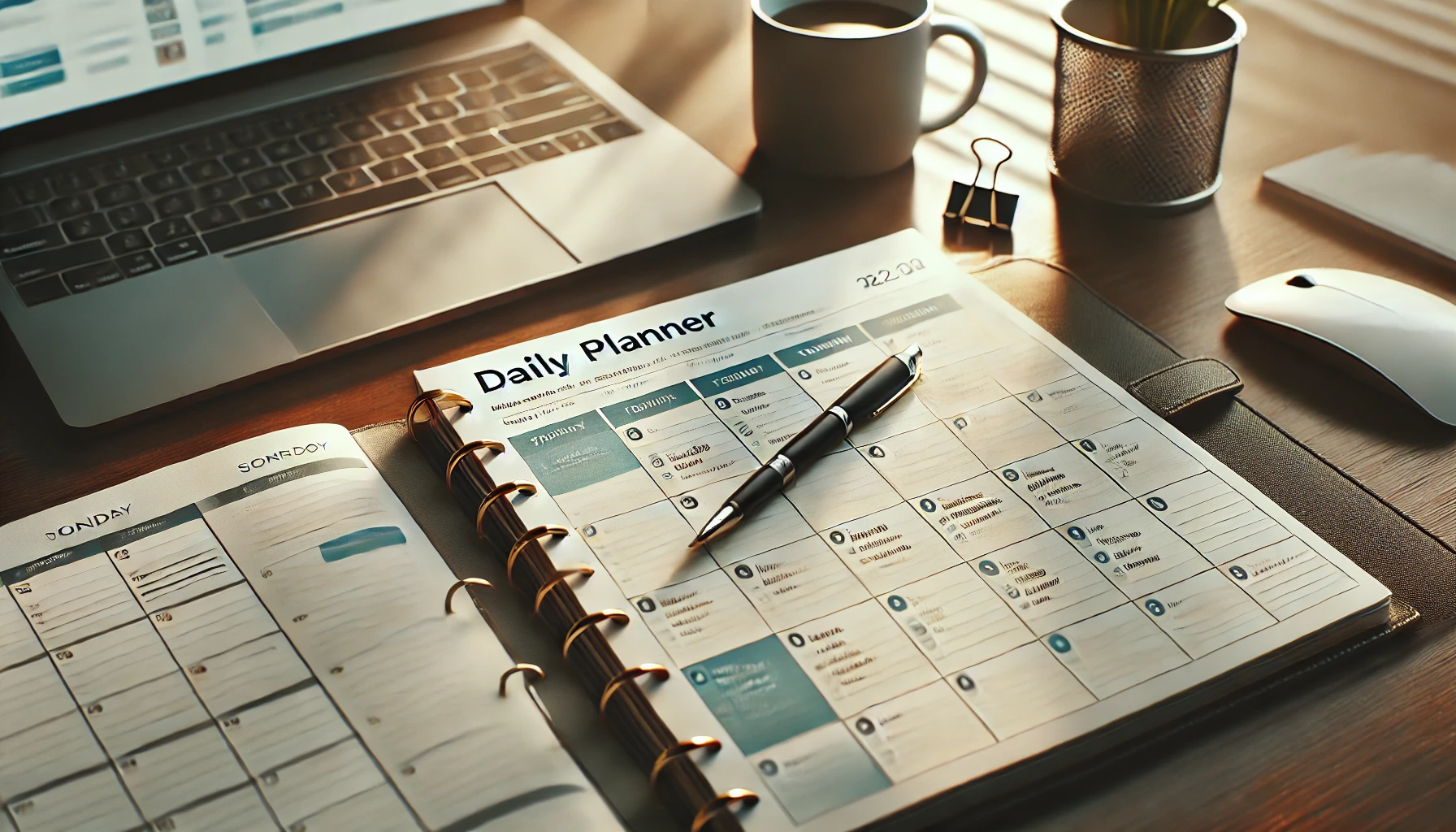If you feel like the day passes too quickly and you can’t get everything done that you planned, it’s time to organize your routine efficiently. Creating a daily planner can be the perfect solution to optimize your time and make your day more productive. In this article, we’ll teach you how to create a daily planner that truly works for you, helping you improve your personal organization and achieve your goals more easily.
Why Have a Daily Planner?
Using a daily planner goes beyond just jotting down appointments and tasks. It’s about structuring your routine in a way that makes your day more balanced and productive. When everything is organized, you avoid the stress of forgetting something important, reduce procrastination, and can focus on what really needs to be done.
Through the planner, you can also concentrate on your priorities and adjust your goals over time. It becomes a powerful tool for anyone who wants more control over their everyday life.
Step 1: Choose the Type of Planner
There are many types of planners available, ranging from physical to digital ones. The choice depends on your preferences and lifestyle. If you’re more traditional, a physical planner might be ideal since you can write manually. If you prefer something more practical and accessible, you can go for a digital planner on your phone or computer.
Some examples of planner types are:
- Daily Planner: Focuses on one single day, ideal for those with many daily tasks.
- Weekly Planner: Allows you to see an overview of the entire week.
- Monthly Planner: Great for visualizing long-term events and organizing monthly appointments.
Choose the type of planner that best fits your routine and makes your daily life easier.
Step 2: Define Your Priorities
Before you start filling in your planner, it’s important to define your priorities. Ask yourself: What is the most important for my day? Identifying your most urgent and important tasks will help you stay focused on what really matters.
A good tip is to apply the Eisenhower Matrix, which divides your tasks into four quadrants:
- Important and urgent: Do it immediately.
- Important but not urgent: Schedule it for later.
- Urgent but not important: Delegate if possible.
- Neither urgent nor important: Avoid or delay it.
Define your priorities at the start of each day and adjust your planner to reflect these decisions.
Step 3: Break Your Day into Time Blocks
One of the best ways to organize your time and increase productivity is by breaking your day into blocks. This means dedicating specific periods of the day to specific tasks. This helps you stay focused and avoid distractions.
For example:
- Morning (8 am – 12 pm): Tackle more demanding tasks, such as work or study.
- Lunch (12 pm – 1 pm): Break for food and rest.
- Afternoon (1 pm – 5 pm): Focus on lighter tasks, like meetings or calls.
- Evening (5 pm – 9 pm): Finish up any pending tasks and enjoy leisure time.
In your daily planner, break your day into time blocks to ensure you’re making the most of your hours. Don’t forget to include strategic breaks to rest and maintain productivity.
Step 4: List Your Tasks
Now that you know your priorities and how to divide your time, it’s time to list your tasks for the day. In your planner, set aside a space to write down your daily tasks clearly and objectively.
Try to be specific and realistic when writing your tasks. For example:
- Instead of writing “Study,” write “Study math, chapter 5.”
- Instead of “Organize the house,” write “Clean the kitchen and organize the cupboard.”
This helps you stay on track and avoid wasting time. Once you complete a task, mark it with a ✅ in your planner, which brings a sense of accomplishment and motivation.
Step 5: Include Space for Reflection
In addition to listing your tasks, it’s essential to reserve time for reflection. At the end of the day, use your planner to note how your day went: what you accomplished, what you didn’t, and why.
This space for reflection helps you identify patterns in your routine and make adjustments for the coming days. It’s an excellent way to continuously improve your planning and increase productivity.
Step 6: Maintain Consistency
The key to making your daily planner effective is consistency. It’s not enough to write your tasks once and then forget about your planner. The ideal approach is to dedicate a few minutes at the start of each day to plan, organize, and review your tasks.
Additionally, at the end of each week, review your performance and adjust your planning if necessary. This will help you stay focused on your long-term goals.
Conclusion
Creating a daily planner and organizing your life effectively can transform your routine and your life. With the tips we shared, you now know how to use a planner to increase your productivity, stay focused on your most important tasks, and achieve your goals more efficiently.
Remember, practice and consistency are essential for making this habit a natural part of your day. Don’t get discouraged if you face difficulties at first. Over time, you’ll see the benefits of staying organized!
